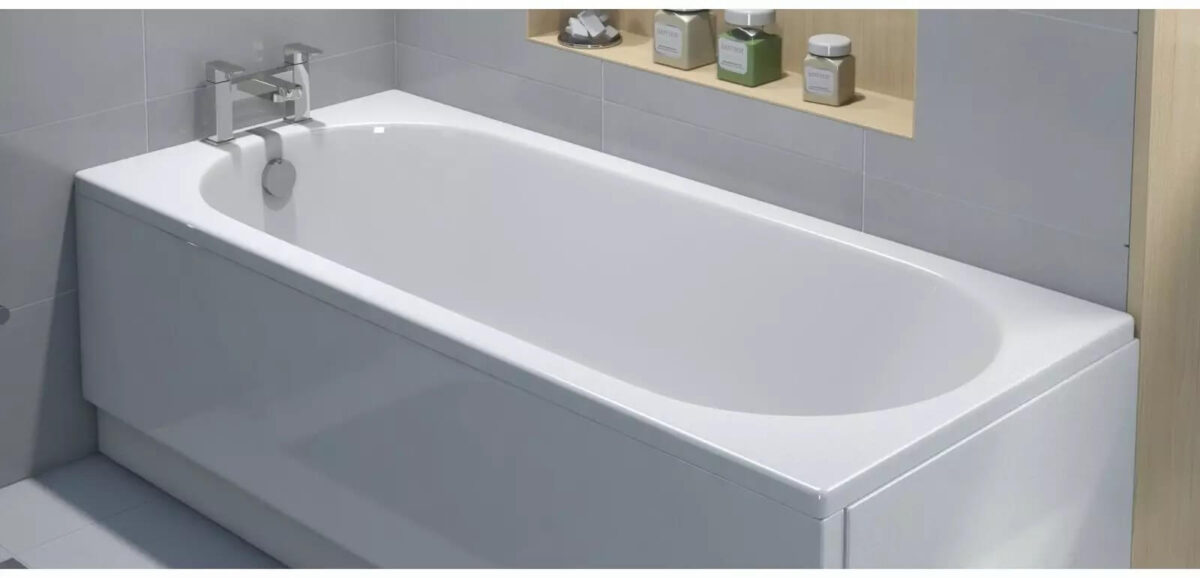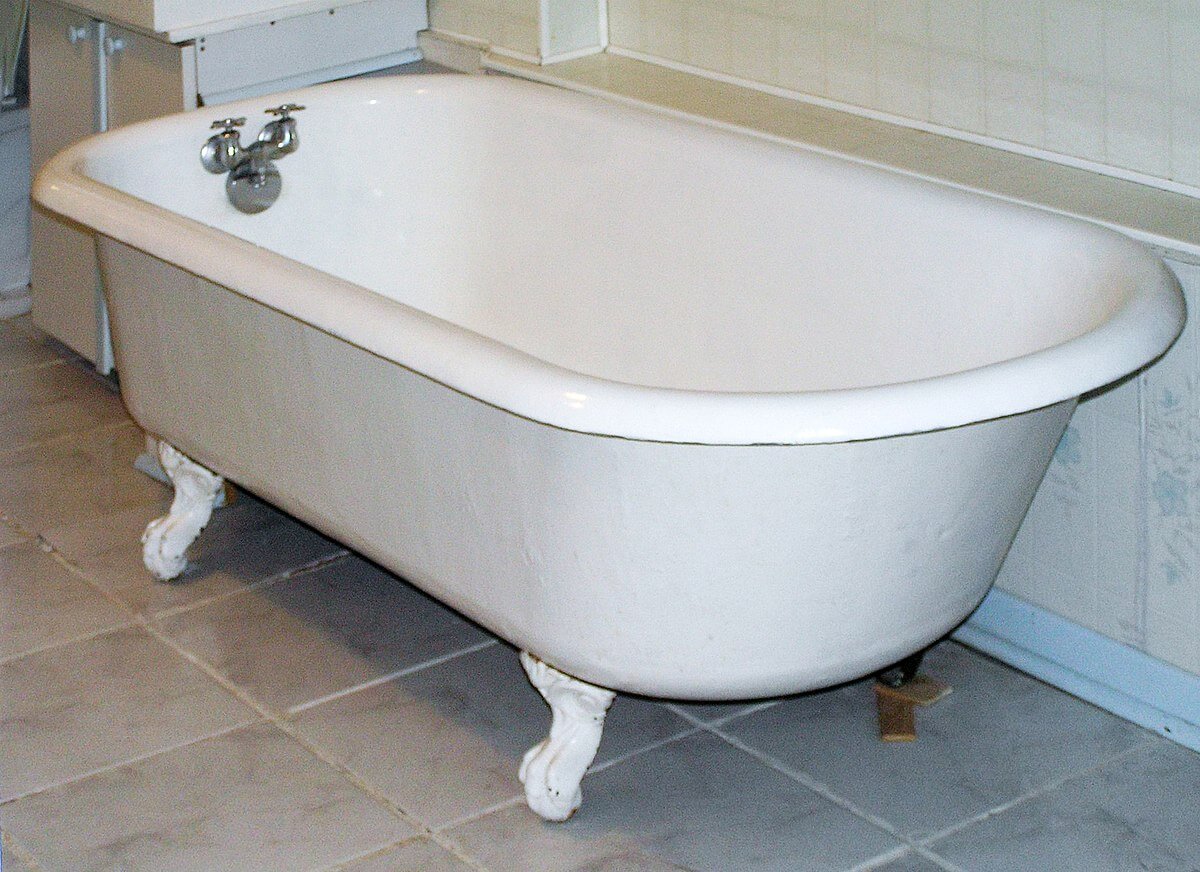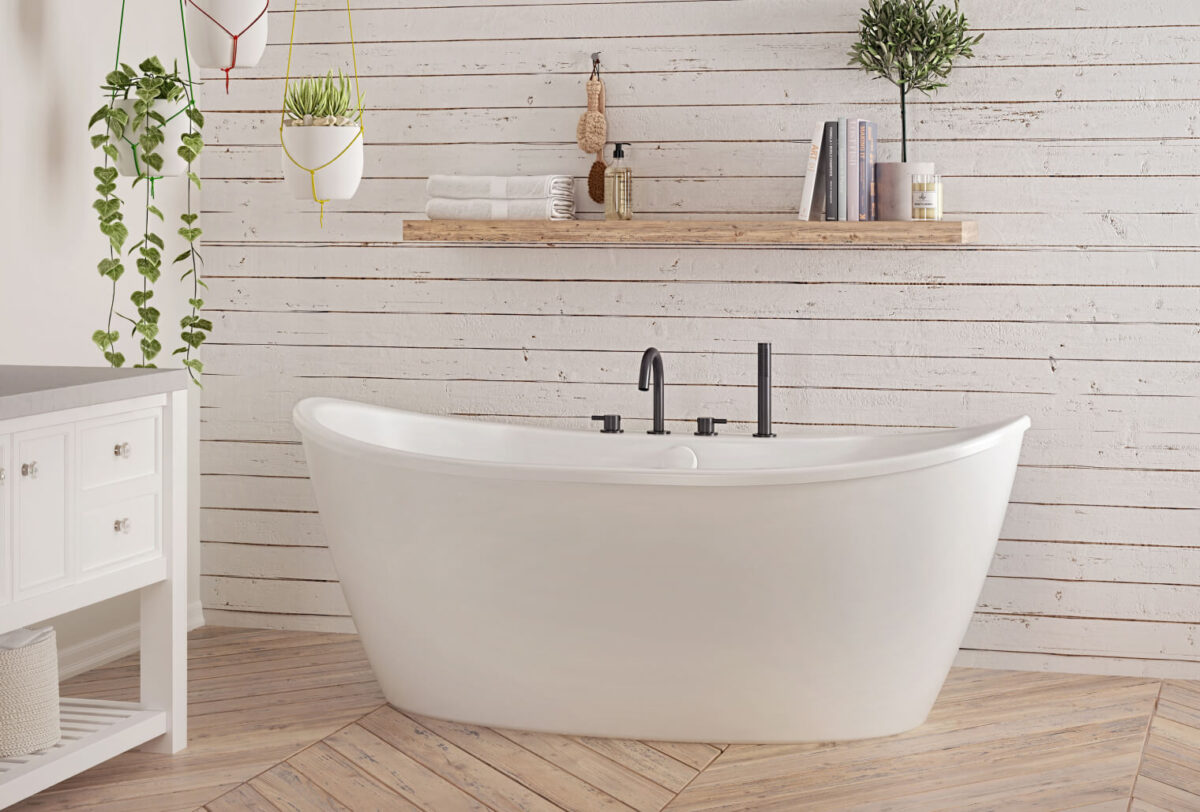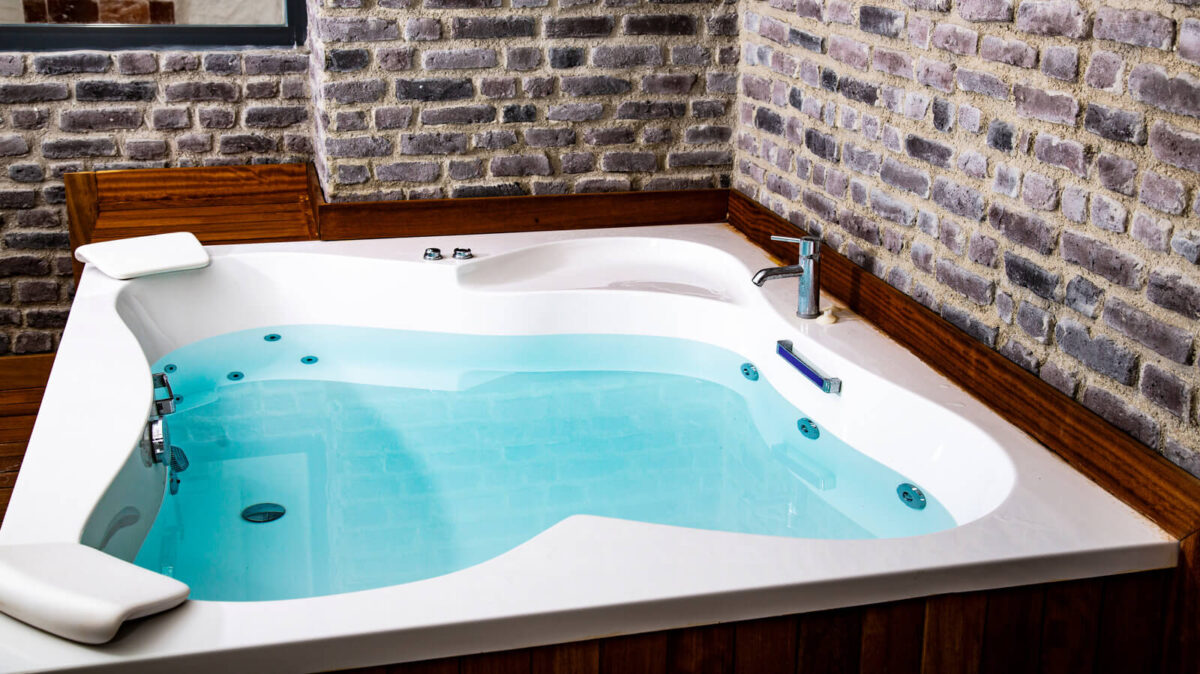Taking a bath is the ultimate in relaxation, but buying a bathtub can be fraught with stress. There’s a dizzying array of bathtub dimensions and shapes. You need to know the best tub materials available—for example, acrylic vs. cast-iron tub—so you can make the right decision for your needs.
Ripping out and replacing a tub isn’t at the top of anyone’s list of fun activities. So, take time to answer these critical questions before you decide between purchasing a new model or refinishing your tub. Our bathtub buying guide will help you choose the perfect tub for your home and lifestyle.
1. Questions to Ask Before Buying a Bathtub
Here are some questions you should consider before buying bathtubs.
1) How do you plan to use your tub?
Your answer determines whether an inexpensive, bare-bones design is sufficient or if you need a higher-quality bath with upgrades. For example, a standard soaking tub simply gets filled with water, while a whirlpool or air bath has jets or channels that provide massaging air. Extras in a soaking bathtub are typically limited to arm- or headrests, grab bars, and slip-resistant flooring.
Whirlpool, air-bath, or combination tubs have many more options, including adjustable jets, ambient underwater lighting, aromatherapy features, heated blowers, and automated cleaning systems. The more elaborate your tub, the more expensive it will be.

2) How much space do you have?
Before falling in love with a particular type of tub, you need to know what your bathroom can accommodate. A standard tub is 60 inches long, 30 inches wide, and 14 inches deep, but many other bathtub sizes and shapes are available.
To determine how large your tub can be, take careful measurements of your bathroom and doorways. Make a note of where the drain is located on the floor to make sure it works with your chosen tub’s design. Also, some tubs don’t allow for a shower, so check before buying if a bathtub-shower combo is a must-have feature for your family.
3) Are there special bathtub installation considerations?
If you’re considering a jetted bathtub, you’ll need to plan for the pump, air switch, and electric timer. Many pumps fit within the tub unit, but some bathtub manufacturers have remote-location pumps that can be placed up to 5 feet from the tub and hidden in a closet or vanity cabinet. The air switch, which is nonelectric, may be on the tub unit. Plan on installing the electric timer a safe distance—at least 5 feet—away from the tub to meet bathroom code requirements.
4) Can your water heater handle the task?
The size of your tub will affect your monthly expenses. A typical bath consists of one-third cold water and two-thirds hot water. If you have a hot water tank, can it supply enough hot water? Tubs vary in size, holding 25-150 gallons of water. Make sure your water heater is large enough to fill about two-thirds of your tub with warm water.
5) Does weight pose a problem?
Plastic bathtubs can weigh as little as 50 pounds, while a cast-iron bathtub can top 1,000 pounds. Can your floors handle the weight if you’re considering a heavier material? When you add up bathtub weight, plus the added weight of water and people, it may be necessary to reinforce the floor beneath the tub with supports or bracing. Also, a too-heavy tub may be impossible or prohibitively expensive to get into a second-floor bathroom.
6) Is the tub comfortable?
Before buying a tub, try it on for size—literally. Climb in, settle back, and imagine yourself soaking. Does it fit and feel comfortable for you? Don’t be embarrassed; it’s the best way to determine if you’ll be satisfied with it.

2. Bathtub Materials to Consider
With hundreds of shapes and sizes to choose from, buying a tub can be overwhelming. Is plastic best? How do you choose between an acrylic and cast iron tub? The bathtub material you select determines its price, durability, and cleanability—along with what type of bathtub cleaner to use. Use our comparison to help you choose the best tub material for your needs.
Plastic: Plastic bathtubs, made of either fiberglass or plastic, offer the most design flexibility because they can be molded into many shapes. These tubs are warm to the touch and insulate well, so water doesn’t cool as fast as in enameled-steel bathtubs or cast-iron tubs. Plastic is also the lightest tub, weighing 60-70 pounds. Although it doesn’t chip easily, abrasive cleaners will damage the surface.
Enameled steel: Formed steel bathtubs with a porcelain-enamel coating are the least expensive tubs. But the material has drawbacks: Steel conducts heat, meaning tub water cools quickly; the surface is prone to chipping, and it weighs about twice as much as plastic.
Cast-iron: Cast-iron tubs, like steel, are coated with enamel. However, they don’t chip as easily as steel because the enamel coating is thicker than steel tubs, and cast iron is more durable and resistant to impact.
At first, a cast-iron tub will pull heat from the water, but once it heats up, it will keep the water warm for a long time. Cast iron’s main drawback is its weight, 350-500 pounds, which may complicate second-floor tub installations.
Cast-polymer: Cast-polymer tubs traditionally replicate the look of marble, granite, or onyx, and they’re available in a range of solid colors. Cast polymer costs a little more than acrylic; however, its surface doesn’t stand up as well. With time, the gel-coat finish on cast-polymer tubs can become brittle and expose the material underneath, leading to cracks.
Proprietary composites: Relatively new entrants to the bathtub marketplace, proprietary composites include heavy-gauge steel, porcelain enamel, and resins. These bathtub materials combine to create a tub that offers all the benefits of cast iron with half the weight.

3. Types of Bathtubs and Installations
Choosing a bathtub also depends on your bathroom’s configuration and which installation can work. Here are a few bathtub installation types to help you figure out what will work with your space.
Alcove tubs: This is the most common bathtub installation. Alcove tubs, also known as recessed tubs, are installed adjacent to three walls.
Freestanding tubs: As their name indicates, freestanding tubs like clawfoot tubs stand alone in a bathroom but must be placed near plumbing lines. Other installation types include corner bathtubs, drop-in tubs, platform tubs, and under-mount tubs. In addition to standard bathtubs, you can buy a top-quality bath with special features that suit your lifestyle.
Soaking tubs: Soaking tubs feature extra-deep dimensions that completely submerge bathers in water for relaxation.
Whirlpool bathtubs: Consider a model with jets for a spa bathtub experience. Whirlpool tubs feature jets that push water around the tub. However, whirlpools are often more expensive than air tubs.
4. Should I Repair or Refinish My Bathtub?
If your tub is leaking, cracked, or worn, it might be time to replace your bathtub. However, maybe your old tub’s character—or the daunting task of ripping it out—doesn’t justify replacement. Refinishing or lining your tub is a great way to fix unsightly chips and stains.
Some companies can refinish your tub with a polyurethane coating that gives it a hard, high-gloss surface. Other companies can outfit your tub with an acrylic liner molded exactly to its size, shape, and style.
A good scrub can go a long way in making your bathtub feel new, too. Try our top tips for cleaning a bathtub.
5. Frequently Asked Questions
The following are some answers about bathtubs.
1) What is the most durable type of bathtub?
Cast iron is the most durable and longest-lasting type of bathtub you can buy, and vintage cast iron tubs are very popular. However, if a cast iron tub is too cumbersome to get to a second-floor bathroom in your home, an enameled steel tub is the next best thing.
2) How long should a bathtub last before needing replacing?
How long before you need to replace a bathtub will depend on how well it’s cared for and whether it’s reglazed during its lifetime, which can add ten or 15 years to the life of a tub. A fiberglass tub will last from ten to 15 years. An enameled steel tub can last ten to 30 years, and a cast iron tub can survive as long as the house it’s in.
3) Is my home value better improved with a tub or a shower?
If you’re choosing between a tub or a shower for a bathroom, a shower will add more value to your home. However, having a tub and a freestanding shower in a primary bathroom will be most appealing to buyers. If you take out a shower-tub combo and replace it with a walk-in shower, you’ll no longer have a full bath—it will now be a three-quarter bath, which may reduce the value of your home.

6. Conclusion
That’s our bathtub buying guide. After reading this article, do you know which bathtub you should choose?
